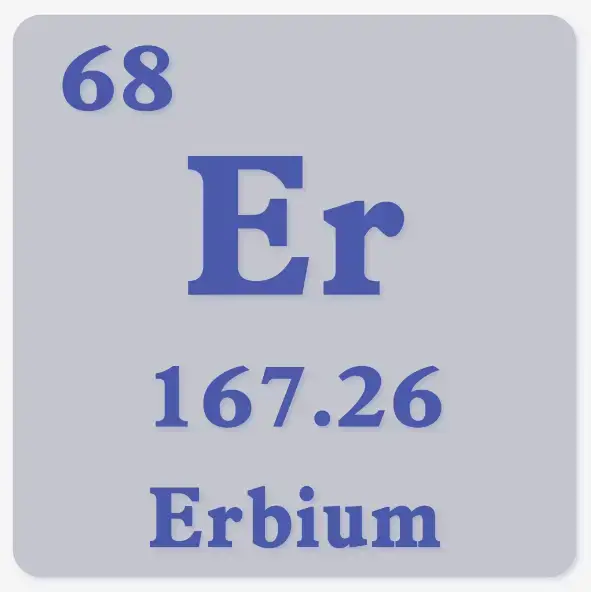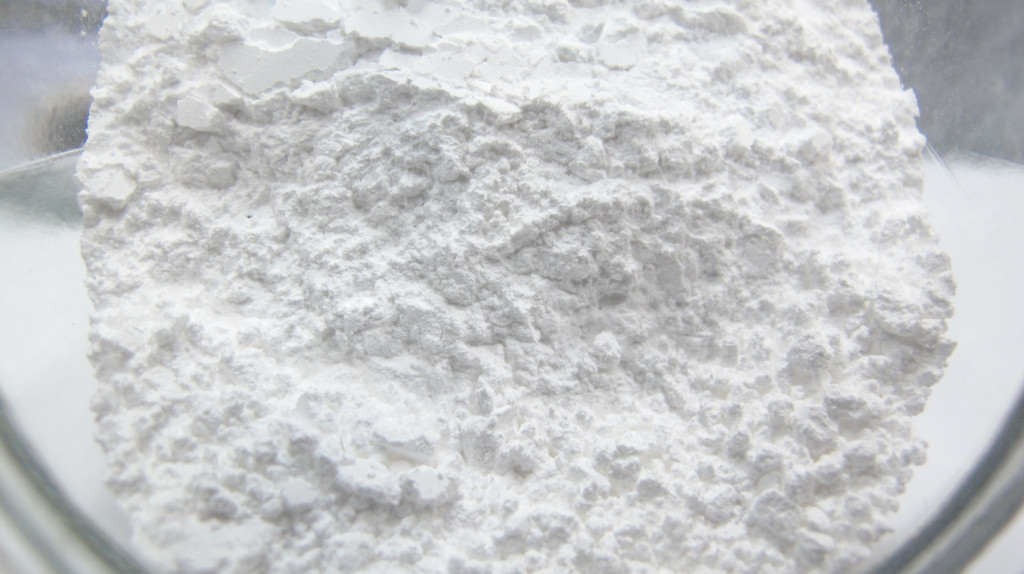In a previous article, we mentioned the rare earth element “Terbium.” Its sibling elements, discovered in the same year, include “Erbium.” Initially, terbium oxide and erbium oxide were confused with each other, and it wasn’t until after 1860 that this was corrected. Both Er and Tb were isolated from gadolinite, yet their oxides differ in color: terbium oxide is yellow, while erbium oxide exhibits a rose-pink hue that evokes a sense of romance.
Introduction
Naturally occurring erbium has six stable isotopes: 162Er, 164Er, 166Er, 167Er, 168Er, and 170Er. Additionally, nine radioactive isotopes have been identified. Erbium is primarily found in igneous rocks, such as gadolinite or xenotime. Erbium was first discovered in 1842 by the scientist Mosander when he analyzed the yttrium oxide in black mineral and found it was not pure yttrium oxide, but also contained erbium oxide and terbium oxide.
Later, in 1878, Swiss chemist Marignac isolated a new element, ytterbium (Yb), from erbium. Subsequently, Cleve isolated holmium (Ho) and thulium (Tm) from erbium. It was eventually proven that the early oxide known as erbium oxide was composed of the oxides of erbium, scandium, holmium, thulium, and ytterbium.
By 1905, Urbain and James successfully isolated highly pure erbium oxide. Later, in 1934, Klemm and Bommer produced pure metallic erbium for the first time by reducing anhydrous chloride with potassium vapor. Today, erbium can also be obtained through the electrolysis of molten erbium chloride.
Erbium (Er)
Atomic number: 68
Atomic Weight: 167.259 u
Atomic structure: The outermost electron configuration of erbium is 4f12 6s2.
Physical/Chemical Properties: At room temperature, erbium is a soft, silvery-white or silver-gray metal that is more corrosion-resistant than many other metals. It is stable in dry air, insoluble in water and alkalis, but soluble in acids. Its salts and oxides range in color from pink to red.
Main Applications and Atomic Structure of Erbium
- Erbium oxide can be used to make ceramic glazes, mixed into glass, or used as a coloring agent for cubic zirconia, which can then be used to manufacture photographic filters, sunglasses, or synthetic gemstones.
- It can also be used as an additive in alloys such as vanadium steel, where it forms special alloys with vanadium metal that reduce hardness and improve malleability and workability.
- It is widely used in the field of optical communications. When erbium-doped fibers are used at critical points in conjunction with standard optical fibers, they can amplify light signals, extending transmission distances by up to 100 times. Additionally, erbium-doped fiber amplifiers can compensate for optical loss in communication systems.
- It is commonly used as a dopant in laser materials for dentistry and cosmetic procedures. Examples include erbium-doped yttrium aluminum garnet lasers (Er: YAG Laser) and erbium, chromium-doped yttrium-scandium-gallium garnet lasers (Er,Cr:YSGG).
- It can be used as a dopant in upconversion nanoparticles, which have great potential for applications in the biomedical field.
- It is also used in the nuclear industry as a control rod material to absorb neutrons in nuclear reactors.
後來有查資料,發現原來鉺雅克雷射(Er:YAG Laser)是最基本的皮膚科治療用雷射阿!
它屬於「剝離式」的汽化型雷射,也就是透過汽化皮膚內部的水份,從表層至深層逐層剝離皮膚組織。
愛漂亮的水水們,有特別研究的話,就可知其常使用在點痣除斑、磨皮與治療痘疤等等用途上。


